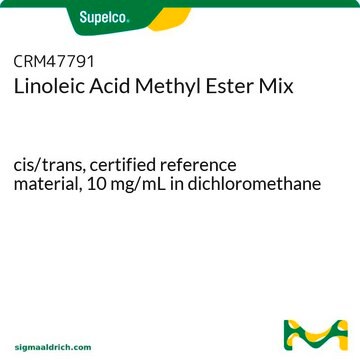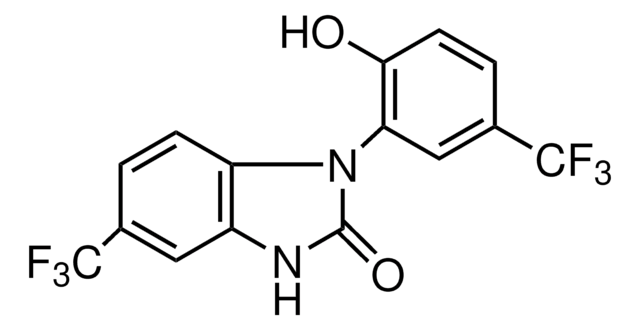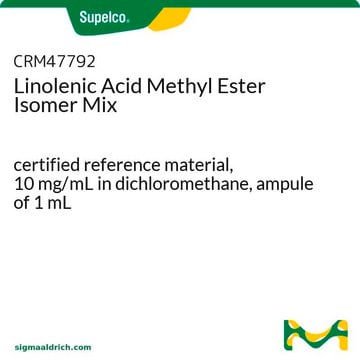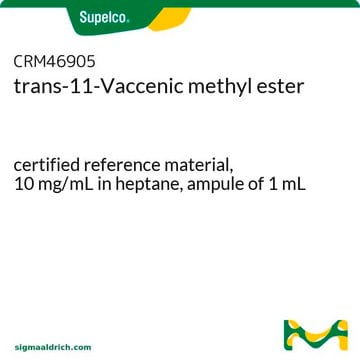O5632
Linoleic acid, conjugated methyl ester
Sinónimos:
CLA methyl ester, Octadecadienoic acid, conjugated, methyl ester
About This Item
Productos recomendados
biological source
plant (safflower)
assay
≥99% (GC)
form
liquid
technique(s)
GC/MS: suitable
HPLC: suitable
impurities
≤1% Linoleic acid methyl ester
functional group
carboxylic acid
ester
lipid type
omega FAs
shipped in
ambient
storage temp.
−20°C
General description
Application
Biochem/physiol Actions
Other Notes
Storage Class
10 - Combustible liquids
wgk_germany
WGK 3
flash_point_f
Not applicable
flash_point_c
Not applicable
ppe
Eyeshields, Gloves
Certificados de análisis (COA)
Busque Certificados de análisis (COA) introduciendo el número de lote del producto. Los números de lote se encuentran en la etiqueta del producto después de las palabras «Lot» o «Batch»
¿Ya tiene este producto?
Encuentre la documentación para los productos que ha comprado recientemente en la Biblioteca de documentos.
Los clientes también vieron
Nuestro equipo de científicos tiene experiencia en todas las áreas de investigación: Ciencias de la vida, Ciencia de los materiales, Síntesis química, Cromatografía, Analítica y muchas otras.
Póngase en contacto con el Servicio técnico








